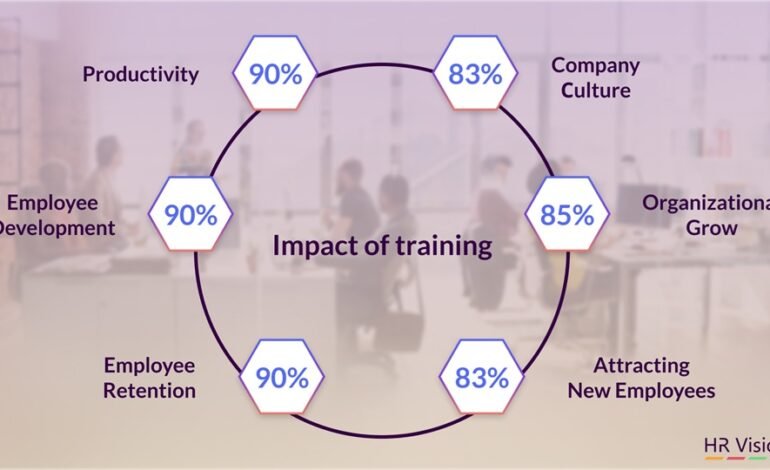The Impact of Employee Performance on Business Growth

Employee performance is a critical factor in determining the success and sustainability of any business. High-performing employees contribute to efficiency, innovation, and overall profitability, while low performance can hinder growth and competitiveness. Businesses that prioritize employee development, engagement, and productivity strategies are more likely to thrive in today’s competitive landscape.
The Link Between Employee Performance and Business Success
Every business relies on its workforce to achieve its goals. Employees who are motivated, skilled, and engaged help drive revenue, improve customer satisfaction, and contribute to a positive workplace culture. On the other hand, poor performance can lead to decreased efficiency, increased costs, and a decline in customer satisfaction, all of which can negatively impact business growth.
Here are some key ways in which employee performance directly affects business growth:
- Increased Productivity and Efficiency
When employees perform well, they complete tasks faster and with higher accuracy. This increased efficiency enables businesses to meet deadlines, fulfill customer expectations, and scale operations effectively. - Better Customer Satisfaction
Employees who are committed to their roles provide superior customer service, leading to higher client retention and positive word-of-mouth referrals. Happy customers are more likely to continue doing business with a company, which directly influences revenue growth. - Innovation and Competitive Advantage
Businesses that encourage high performance create an environment where employees feel motivated to innovate. A culture of innovation helps companies stay ahead of competitors and adapt to market changes more effectively. - Lower Employee Turnover
When employees are engaged and feel valued, they are less likely to leave. High turnover rates can be costly due to recruitment, onboarding, and training expenses. Investing in employee performance can lead to long-term retention and stability within the organization.
How to Enhance Employee Productivity for Business Growth
Improving employee performance requires a strategic approach that includes training, motivation, and effective management practices. Below are some key ways to enhance employee productivity:
- Set Clear Goals and Expectations
Employees perform better when they understand their roles and responsibilities. Setting specific, measurable, achievable, relevant, and time-bound (SMART) goals helps employees stay focused and aligned with company objectives. - Provide Continuous Training and Development
Regular training sessions and skill development programs help employees stay updated with industry trends and improve their competencies. Businesses that invest in employee development often experience higher productivity levels and better overall performance. - Encourage a Positive Work Culture
A healthy and positive work environment boosts morale and motivation. Recognizing achievements, providing constructive feedback, and fostering teamwork can significantly enhance employee productivity. - Leverage Technology and Tools
Using modern technology, such as automation software and project management tools, can streamline workflows and reduce manual effort. Equipping employees with the right tools enhances efficiency and overall performance. - Implement Employee Recognition Programs
Rewarding and recognizing employees for their hard work and achievements fosters motivation and encourages them to perform at their best. Incentives such as bonuses, promotions, and public recognition contribute to higher engagement levels. - Promote Work-Life Balance
Overworked employees are more likely to experience burnout, leading to decreased productivity. Encouraging flexible work schedules, remote work options, and mental health initiatives can help employees maintain a balance between work and personal life, resulting in better performance.
Measuring Employee Performance for Growth
To ensure continued growth, businesses must regularly assess employee performance through key performance indicators (KPIs). Some common ways to measure performance include:
- Performance Reviews: Conducting regular one-on-one performance discussions to provide feedback and set new goals.
- Productivity Metrics: Tracking output levels, completion rates, and efficiency levels.
- Employee Engagement Surveys: Measuring employee satisfaction and motivation to identify areas for improvement.
- Customer Feedback: Assessing customer satisfaction based on employee interactions and service quality.
Conclusion
Employee performance is a driving force behind business growth. Companies that prioritize strategies to enhance employee productivity benefit from improved efficiency, higher customer satisfaction, and long-term success. By fostering a positive work culture, investing in employee development, and leveraging the right tools, businesses can create a motivated and high-performing workforce that contributes significantly to overall growth and sustainability.











